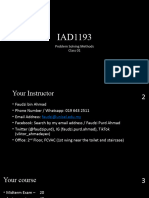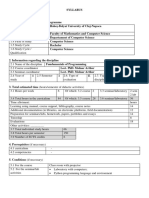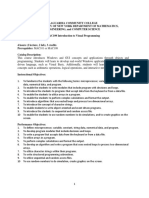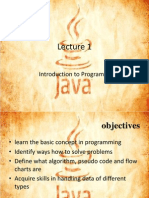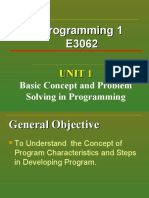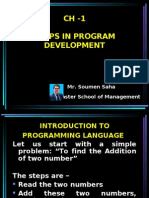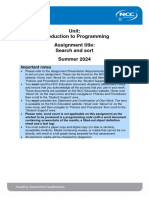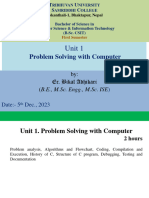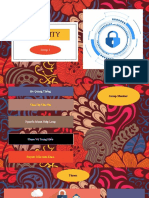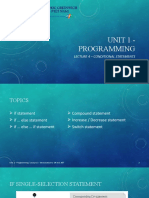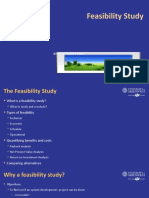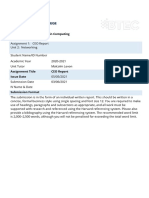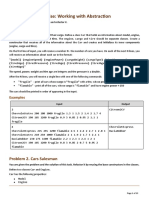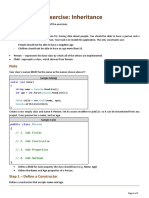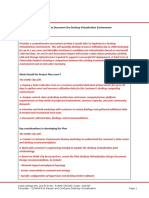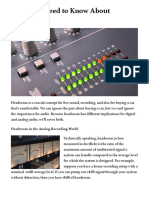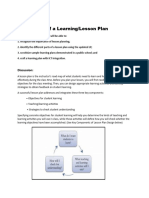0% found this document useful (0 votes)
95 views40 pagesUnit 1 - Programming: Lecture 1 - Introduction
This document provides an introduction to a programming course, including topics like problem solving, algorithms, the program development process, and course materials. The introduction covers defining problems, designing algorithms and flowcharts, coding programs, testing and debugging code, and documenting programs. It also includes examples and activities to illustrate key concepts.
Uploaded by
Bob LongCopyright
© © All Rights Reserved
We take content rights seriously. If you suspect this is your content, claim it here.
Available Formats
Download as PPTX, PDF, TXT or read online on Scribd
0% found this document useful (0 votes)
95 views40 pagesUnit 1 - Programming: Lecture 1 - Introduction
This document provides an introduction to a programming course, including topics like problem solving, algorithms, the program development process, and course materials. The introduction covers defining problems, designing algorithms and flowcharts, coding programs, testing and debugging code, and documenting programs. It also includes examples and activities to illustrate key concepts.
Uploaded by
Bob LongCopyright
© © All Rights Reserved
We take content rights seriously. If you suspect this is your content, claim it here.
Available Formats
Download as PPTX, PDF, TXT or read online on Scribd
/ 40



